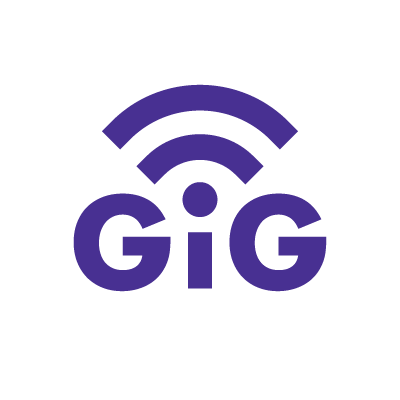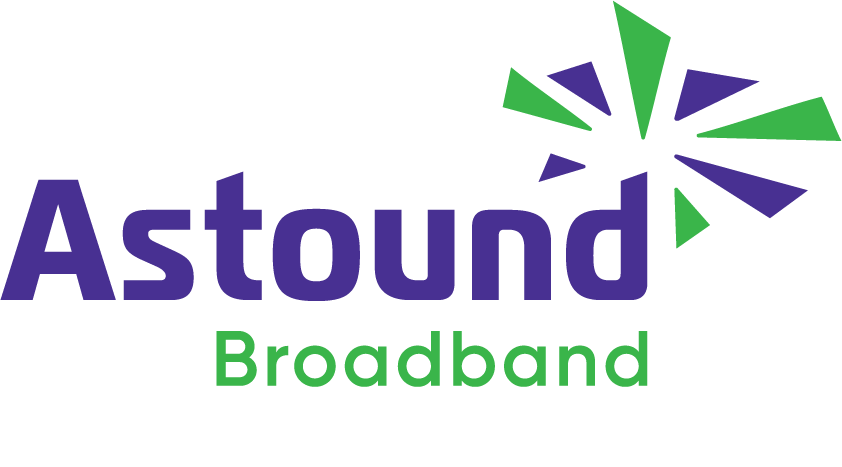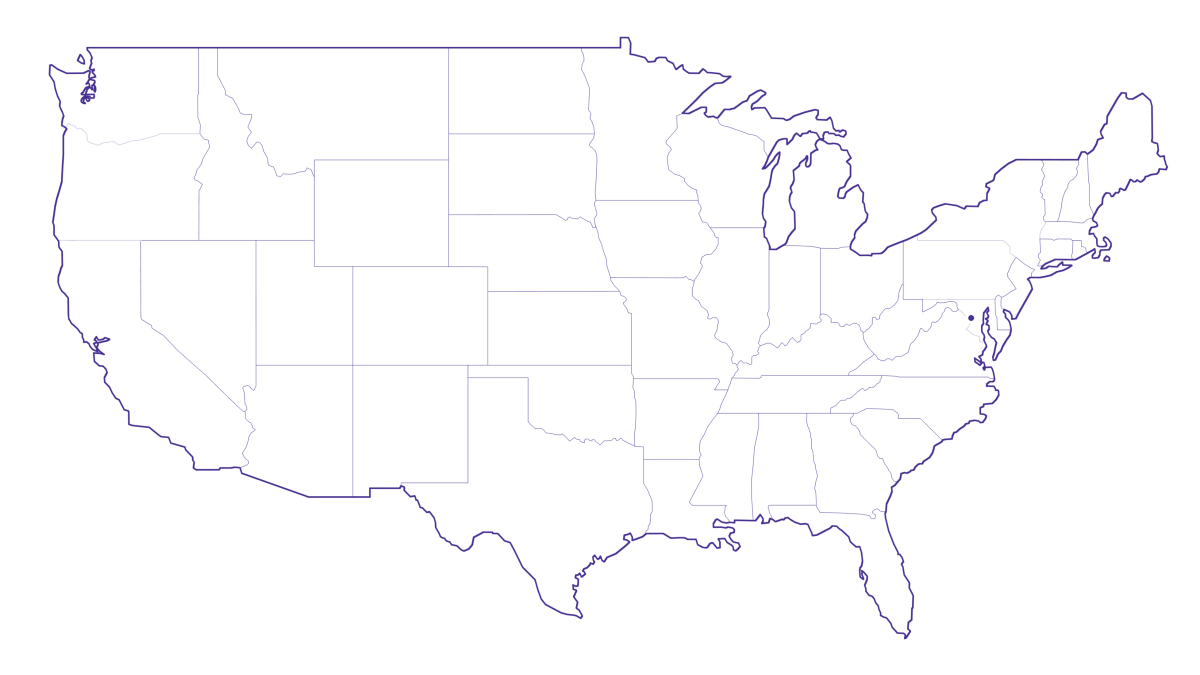Is 5G home internet good for gaming?

While 5G home internet can deliver speeds ranging from 40 Mbps to 300 Mbps, which may support some gaming requirements, it comes at a trade-off.
A good gaming experience depends on low latency, steady bandwidth and fast speeds. However, 5G fixed wireless broadband often experiences latency fluctuations and inconsistent speeds during network congestion, strict data caps and limited coverage. These issues reduce the overall quality of service and can disrupt smooth gameplay.
This article will explore the reality of gaming on 5G home internet and its limitations. We will also compare it to fiber and cable internet to determine whether it is ideal for today’s gaming needs.
The reality of gaming on 5G internet
5G home internet promises to improve the gaming experience with higher download speeds and lower latency. However, performance depends heavily on network conditions. When many 5G home internet and mobile users share the same cell towers, they compete for bandwidth capacity, which reduces speeds and increases latency.
Before choosing 5G fixed wireless internet for your gaming needs, let’s look at some of its limitations and how they impact your gaming experience.
Inconsistent connection during peak times
Internet usage typically surges during peak hours, especially in the evenings when people return home from work or school. At this time, many users simultaneously stream and play online games or engage in other high-bandwidth activities that strain 5G networks.
Gaming during peak hours can lead to frustrating experiences because network congestion puts heavy demand on available network capacity. The strain on your 5G home internet’s bandwidth often translates to slower upload speeds, higher latency and laggy gameplay.
Network & Coverage
Astound's got you covered
Our mobile service runs on a nationwide network with 5G service in all 50 states giving you reliable nationwide coverage you can count on.

Too much latency fluctuation
Latency is the time it takes for a packet of information to travel over a network, and it’s critical in online gaming. While 5G offers lower latency than the older 4G and 3G technologies, fluctuations and spikes occur frequently. The factors causing these spikes include:
- Network congestion caused by a surge in users
- Increased physical distance between devices and 5G cell towers
- Signal interference from physical barriers
- Adverse weather conditions that disrupt wireless signals
Latency fluctuation disrupts real-time gameplay, especially in multiplayer first-person shooter games like Call of Duty or in esports competitions.
The latency spikes create lag that prevents a player’s actions from syncing with the game server, breaking the flow of the game.
For comparison, wired broadband connections like cable or fiber provide more stable performance with consistent speeds, latency and less jitter due to their underlying wired infrastructure.
Lower priority than cell users
5G fixed wireless network providers prioritize cell phone service users over home internet users during peak usage hours when network demand is high. For instance, one Reddit user reported their 5G home internet being throttled after heavy data use, even outside peak hours, to ensure mobile phone users maintain faster and more reliable connections.
What does this deprioritization mean for 5G home internet users? The deprioritization of home internet services leads to slower and inconsistent speeds that impact gaming and streaming during busy times. Slower internet speeds result in longer game downloads and lag in fast-paced, competitive games.
5G home internet deprioritization is part of network management to ensure an even allocation of network resources. However, it can come at a price for gamers relying on a stable internet connection.
Data caps on 5G plans
Aside from a stable connection and low latency, online gaming also requires large amounts of data to handle game downloads and frequent updates. For example, Call of Duty requires 172 to 240 GB of data, which can quickly drain the limited data caps that many 5G plans impose. These caps are often exhausted by massive downloads, recurring updates and streaming gameplay in HD or 4K quality.
Ask the Expert video tutorial: Does 5G home internet have data caps?
Read transcript: Does 5G home internet have data caps?
Transcript
00:00:00 Jason Firch
If I’m paying for the internet, I want to make sure that I’m getting what I’m paying for. What should we know about throttling and data caps with the 5G solution versus a wired connection?
00:00:14 Kristell Janusz
Throttling the network—a lot of times there will be providers that once you’ve hit a data cap, they slow down your speed. It’s not something that’s widely known, but that does happen to users with their data usage.
In a wired connected environment, some service providers don’t have any data caps. It’s “all you can eat”. Whatever you consume, you consume.
NAT issues prevent open connections for multiplayer games
Network Address Translation (NAT) is the method by which multiple devices on a local network share a single public IP address.
Most 5G providers use Carrier Grade NAT (CGNAT), which restricts the NAT type for their users and limits the ability to connect to other players with different NAT types. NAT issues can cause frequent disconnections, blocked ports and failure to join a multiplayer server, making various games unplayable.
In addition, some users experience double NAT wwhen connecting the 5G home internet gateway device to their own routers. This setup causes traffic to go through two layers of NAT, which interferes with gaming features like port-forwarding, peer-to-peer matchmaking and real-time communication between devices connected to the gateway and those connected to the other router. Furthermore, features such as voice chat may not work correctly with double NAT.
Limited coverage
The ongoing deployment of 5G networks, mainly in urban areas, leads to uneven coverage across regions, negatively impacting gamers in areas without 5G services.
Gamers in regions that lack 5G coverage have to depend on 4G and 3G networks, which fall short on faster speeds and lower latency, leading to a suboptimal gaming experience.
Limited 5G coverage impacts fair competition and equality in gaming experiences. Coverage disparities create an imbalance in competitive online multiplayer gaming, as players in areas with strong 5G coverage have an unfair advantage over those with limited coverage. They experience smoother gameplay and real-time gaming interactions, while their counterparts face lag and slower speeds.
Until 5G networks’ coverage expands further than urban areas, gaming with wired internet connections remains a reliable solution due to their widespread availability and consistent performance across regions.
Gaming internet
Get the total gaming solution
How you game is up to you. One thing is clear–you need fast and ultra-reliable internet. Get fiber‑powered internet that delivers Gig speeds no matter what high-bandwidth activity you choose.

Will a gaming router improve my latency and reliability on 5G?
A gaming router is designed to improve the gaming experience by reducing lag and ensuring smoother gameplay. Gaming routers differ from standard routers by offering features that prioritize traffic and optimize network resources to minimize latency and support high speed performance.
Gaming routers provide the following advantages over regular routers:
- Quality of Service (QoS) features that prioritize gaming traffic
- Prioritization of gaming data packets, leading to lower network latency and reduced lag
- Customizable settings to fine-tune the network for specific game needs
- Enhanced security features such as built-in VPN support and a traffic controller
- Graphical user interface for non-technical users to edit the QoS settings
However, pairing a gaming router with 5G home internet has limits. Latency in 5G involves multiple “hops,” as the signal must travel from your gaming device to the router, then to the cell tower, then to the game server and back to your device. If the 5G signal is inconsistent or has issues, even a gaming router may not be able to fully compensate for these limitations.
In addition, using a gaming router with a 5G home internet gateway device may result in double NAT issues. Features like port forwarding and Universal Plug and Play (UPnP), which are built into gaming routers, can lead to more connection conflicts if these features are enabled on both devices.
FIBER-POWERED GIG INTERNET
Gig+ speeds, unbeatable value
Get Gig speeds up to 1500* Mbps starting at $60/mo on Astound’s ultra-reliable fiber-powered‡ network.

5G vs. fiber and cable internet for gaming
Choosing the right type of internet access for your gaming needs is crucial, as each connection type affects your overall gameplay. Consider the following factors when comparing 5G to wired broadband options for your gaming needs:
Consistency of speeds
Fiber and cable internet stand out because a wired connection can provide a more consistent connection with Gigabit speeds for more seamless gaming sessions.
A wired connection is less vulnerable to signal interference or weather conditions, resulting in more consistent speeds and reliable connections.
Ask the Expert video tutorial: How reliable is a 5G home connection?
Read transcript: How reliable is a 5G home connection?
Transcript
00:00:00 Jason Firch
So I’d like to pose the question of how reliable is a 5G connection for home internet versus traditional wired connection?
00:00:09 Kristell Janusz
There are definitely differences, you know, in a wired connection versus a wireless connection for the 5G. And again, talking about that—that piece from the cellular to your home is a shared network. And by being a shared network the infrastructure is susceptible to congestion, network congestion. Some providers may use a method of prioritizing data for their mobile users over their home users, which could cause slower speeds.
In a fiber connected wired environment, our traffic management is consistent and predictable. At Astound we don’t utilize any prioritization methods and instead ensure there’s enough capacity for all of our customers.
Another factor in reliability for a 5G network is the structural landscape of the environment, where the signal received at the customer’s home can be affected by the distance to the cellular base location.
00:01:30 Kristell Janusz
And any building or structural interference between the two of those can affect the performance of the signal that’s received at the home.
00:01:41 Jason Firch
What about when we’re talking, you know, say during peak usage hours? I know from Astound’s perspective, we’re able to ramp up capacity. We’re able to provide that consistent delivery of performance. But is that the same with these cell towers? Are they able to provide that consistent experience? Let’s say, six o’clock, seven o’clock, it’s prime news time or everyone’s off of work and watching their TV shows. Is their experience going to be a little bit different on 5G?
00:02:14 Kristell Janusz
That experience—and the traffic management and the analysis of that—is a little less predictable than what we have in our fiber networking system. We’ve been doing this for years. We kind of know, (from) back in the phone days it used to be called “the Mother’s Day syndrome”, where everyone was calling their mother on, you know, Mother’s Day! And you had an influx of of calls on the network. So you had to design around that.
Well, in a 5G network, it’s a little less predictable than that type of consistent traffic because you’ve got people going in and out of that service area with mobile and your broadband, home broadband network. So it’s harder to predict how much traffic is going to flow through the network and especially during peak times.
Conversely, 5G’s wireless internet signals are transmitted through 5G cell towers, which may encounter slowdowns during peak times due to network congestion.
In addition, many 5G fixed wireless providers may deprioritize and throttle 5G home internet speeds during peak hours to accommodate mobile phone users. Internet deprioritization slows down speeds, raises latency counts and results in a subpar gaming experience.
Ability to choose internet speeds
Fiber and cable internet plans typically allow users to find their ideal speeds from a range of options, allowing for flexibility based on their specific needs.
With Astound, you can choose from internet plans with speeds as low as 300 Mbps if you are a casual gamer or higher multi-Gigabit speed plans for professional and avid gamers.
On the other hand, 5G internet speeds typically range from 40 Mbps to 300 Mbps. However, these speeds can fluctuate due to network congestion, distance from the cell tower, physical obstacles and adverse weather conditions. 5G home internet’s inconsistency makes it less dependable for activities that require fast and stable speeds, such as competitive gaming, cloud gaming or streaming gameplay content in 4K quality.
Capacity to connect to more devices
Your internet connection should be able to connect to multiple devices without compromising performance. Fiber and cable internet connections are known for their higher bandwidth, which supports multiple devices simultaneously.
You can host multiplayer gaming sessions with various consoles and connect to other personal and household devices.
While 5G also supports multiple device connections, a surge in device connections can lead to bandwidth strain.
5G internet providers may also impose device limits on their networks, which, when exceeded during peak hours, can result in slower speeds and high latency due to network congestion.
Improved reliability
Fiber and cable internet are more reliable than 5G home internet for gaming requirements because of their wired technology, which provides stable connections with reduced lag and jittering while playing. A wired setup is also more compatible with advanced technologies, such as edge computing services that bring game servers closer to the player for faster response times
5G’s performance fluctuates, which can make it less reliable and more unpredictable for gamers due to potential disruptions while playing. Latency spikes, throttling and uneven coverage can make it difficult to maintain a steady connection.
When choosing between 5G and fiber for gaming, it is essential to consider speed, reliability and latency.
Fiber and cable are the preferred choices for gaming because of their faster speeds, lower latency and consistent performance. A wired connection provides advantages such as lower ping and jitter rates and unlimited data, resulting in a better online gaming experience than 5G networks.
Bottomline: Is 5G internet good for gaming?
If you want an excellent online gaming experience, 5G home internet may not be ideal for your gaming needs. 5G’s latency spikes, inconsistent speeds, restrictive data caps and limited coverage can negatively affect your gaming experience. These issues affect the overall quality of service needed for demanding applications like multiplayer gaming sessions or real-time gameplay streaming.
For gamers, every millisecond counts. Online gaming demands a stable connection with low latency, high bandwidth and reliable performance. Wired broadband connections like fiber and cable stand out because they deliver fast Gigabit speeds, unlimited data allowance and consistent performance across multiple devices.
Astound’s fiber-powered internet connection offers gamers the advantage of lower latency, smoother gameplay and greater reliability compared to 5G home internet. In addition, you can save on costs by bundling internet services with Astound Mobile to give you flexible and convenient plans at an affordable price.
By choosing Astound, you get the stability and speed required for gaming, plus the value of flexible plans that adapt to your household’s needs.
See how much you can save
Save with Astound
Check out our savings calculator to see the change in your bill when you build a plan with Astound.

Frequently asked questions
Do 5G home internet plans have data caps?
Yes, many 5G home internet plans include data caps. Once you exceed the limit, providers often throttle speeds, which slows game downloads, raises latency and disrupts gameplay. You may also be charged overage fees, which makes 5G home internet more costly for avid gamers and households that run data-heavy applications.
How does deprioritization affect 5G home internet users?
During network congestion, many 5G home internet users are often deprioritized to prioritize mobile phone users or premium plans to maintain their connections. It leads to slower speeds, longer game downloads, higher latency and laggy gameplay, which can significantly impact your online gaming experience.
Can I use 5G tethering or a hotspot on my smartphone for gaming?
Tethering or a mobile hotspot can work for casual gaming, but it’s not recommended for competitive or professional gaming. Tethering introduces additional latency and can quickly use up mobile data, especially for game downloads and updates. A wired connection, like fiber or cable internet, provides lower latency and unlimited data allowance to handle your gaming needs.
Are wired connections better than 5G home internet for gaming?
Yes. Wired connections like fiber and cable deliver consistent speeds, high bandwidth capacity and lower latency than 5G home internet. 5G home internet is vulnerable to performance fluctuations due to factors like network congestion, weather and distance from cell towers, making it less reliable for an optimal gaming experience.
What internet speed is best for gaming?
Most online games require at least 25 to 100 Mbps download speed, but professional or competitive gaming requires faster speeds, lower latency and high bandwidth. While 5G home internet delivers 40 to 300 Mbps, it’s prone to inconsistent performance. On the other hand, wired internet connections offer fast Gigabit speeds, unlimited data and reliable performance for an ideal gaming experience.
Create the perfect bundle
Get the speed, WiFi, mobile and TV that’s just right for you.
*Internet speeds may vary & are not guaranteed. Certain equipment may be required to reach advertised speeds. DOCSIS 3.1 modem with 2.5GE physical LAN port is required for 1 Gigabit speeds and higher. See astound.com/yourspeed for why speeds may vary. To view Astound’s FCC Network Management Disclosure see astound.com/policies-disclaimers. Limited time offer, subject to change without notice. Advertised promotional price valid for duration of the stated promotional period from time of service activation. Regular rates apply after promotional period ends. Equipment not included and is extra. Modem required for Internet service. Enhanced Wi-Fi or Whole Home Wi-Fi (eero) not included and is add’l. Offer includes a monthly discount for enrollment in both automatic payments (autopay) & paperless billing (e-bill). Discount of $10 applies with automated bank account deduction or a discount of $5 applies with automated credit/debit card payment. Valid email address required. Must complete enrollment in autopay and e-bill within 30-days of placing the order. Without enrollment, the discount does not apply. Discount appears on bill within 3 bill cycles after enrolling. If either autopay or e-bill is canceled, services are changed, or the account is not in good standing, then the monthly discount will be discontinued. Offer valid only for new residential Astound customers or previous customers with an account in good standing who have not had Astound service within the last 60 days. Any add’l services, equipment, premium channels & other tiers of service are subject to an add’l charge & regular increases. A one-time activation fee of $14.99 (in addition to any installation fees) will be charged & is subject to change. Add’l fees apply for taxes & surcharges, and are subject to change. WA RESIDENTS: unless otherwise specified, price does not include a 2% Regulatory Administration Fee. For details about taxes, fees & surcharges visit astound.com/fees. No early termination fees apply in the event service is terminated in advance of the promotional end date. Customer is responsible for any accrued service charges in the event service is canceled. Subject to credit check. Not all services & speeds are available in all areas. A multi-product discount may be available to qualifying addresses with a subscription to mobile, TV, and 600 Mbps Internet or higher. Discounts will be reflected in your order cart at time of purchase, if available. Other restrictions may apply. All services are governed by the Astound Customer Terms & Conditions that can be found at astound.com/policies-disclaimers. © 2025 Radiate HoldCo, LLC d/b/a Astound Broadband. All rights reserved.
While we have made every attempt to ensure that the information contained in this site has been obtained from reliable sources, Astound is not responsible for any errors or omissions, or for the results obtained from the use of this information. All information in this site is provided “as is”, with no guarantee of completeness, accuracy, timeliness and without warranty of any kind, express or implied, including, but not limited to warranties of performance, merchantability and fitness for a particular purpose. Certain links in this site connect to other websites maintained by third parties over whom Astound has no control. Astound makes no representations as to the accuracy or any other aspect of information contained in other websites.
eero Plus is available for an additional $9.99/month and requires subscription to whole home WiFi powered by eero.

















